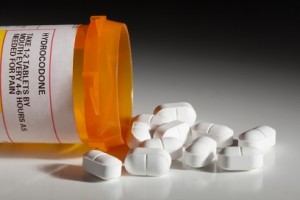New guidelines from the American Society of Addiction Medicine (ASAM) on the use of medications in the treatment of opioid addiction should increase the number of patients who receive medication-assisted treatment, says the chair of the guidelines committee. Broad implementation of the guidelines can save lives, according to Kyle Kampman, M.D.
“Less than 30 percent of treatment programs offer medications to treat addiction, and less than half of those eligible patients in those programs receive medications,” said Dr. Kampman, who is Professor in the Department of Psychiatry at the Perelman School of Medicine at the University of Pennsylvania Treatment Research Center.
The consequence of untreated addiction – overdose from prescribed opioids and heroin – kills 68 people a day in the United States. The number of deaths from prescription opioids has more than tripled since the 1990s. From 2002 to 2013, the rate of heroin overdose deaths nearly quadrupled.
Dr. Kampman noted that while there are existing guidelines for treating opioid addiction, they tend to focus on single medications—such as guidelines for using buprenorphine or methadone. Until now there have been no comprehensive guidelines that included all medications approved by the Food and Drug Administration (FDA) to treat opioid addiction, he noted. The National Practice Guideline for the Use of Medications in the Treatment of Addiction Involving Opioid Use, released on September 24, will help doctors treating patients addicted to opioids match the best treatment to each individual patient.
“Doctors treating patients with opioid addiction have many questions about which patients are appropriate for which medications,” Dr. Kampman said. “They want to know which drug to use, at what dose, and for how long. They also want to know about how to treat special populations, such as pregnant women, adolescents, and patients in pain. All of these are addressed in the guidelines. The answers are all in a single place, which makes this unique.”
The guidelines also include a section on how to use the opioid overdose antidote naloxone. “This is an area that is very important, but not very well known among doctors,” Dr. Kampman observed.
The guidelines are designed for any doctor who treats patients with opioid addiction, including internists and family practitioners, Dr. Kampman said. “Our hope is that doctors who have been reluctant to treat opioid addiction, or were unaware there were so many effective treatments available, will start to use these treatments now that they have guidelines from ASAM, which is a trusted source.”
Two areas generated a lot of discussion among the experts who devised the guidelines, Dr. Kampman said. First, although buprenorphine treatment is generally started in a doctor’s office, the experts ultimately decided that treating patients at home is appropriate if both the doctor and patient are familiar with the treatment.
Second, although the hypertension drug clonidine is not approved by the FDA for opioid addiction, many doctors prescribe it for this purpose. The experts decided that since it is so widely used for opioid addiction, they would include it in the guidelines.
Published
September 2015
 Get Support
Get Support

